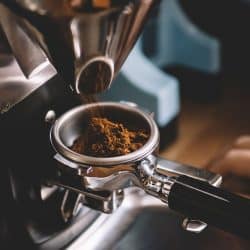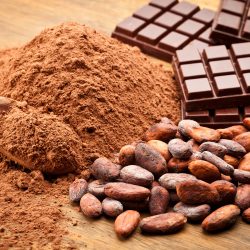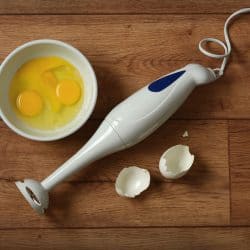Nothing beats a good cup of coffee first thing in the morning. However, we can run into situations where we can not grind our coffee beans. Maybe our grinder broke down. So, now we have to wonder, can an immersion blender grind coffee beans? If that's the question you are wondering, let's find out!
It is possible to grind coffee beans with an immersion blender. Of course, the type of grind may vary. It is dependent on the strength of your immersion blender. If you still wish to go with this method, attach the chopper attachment to your wand. Put some coffee beans into the chopping bowl and grind away.
Now that you know that it is possible to grind coffee beans with an immersion blender, you may have more questions. Like, what is the best way to grind coffee beans? Is it possible to over-grind them? If you would like to know more, keep reading ahead.
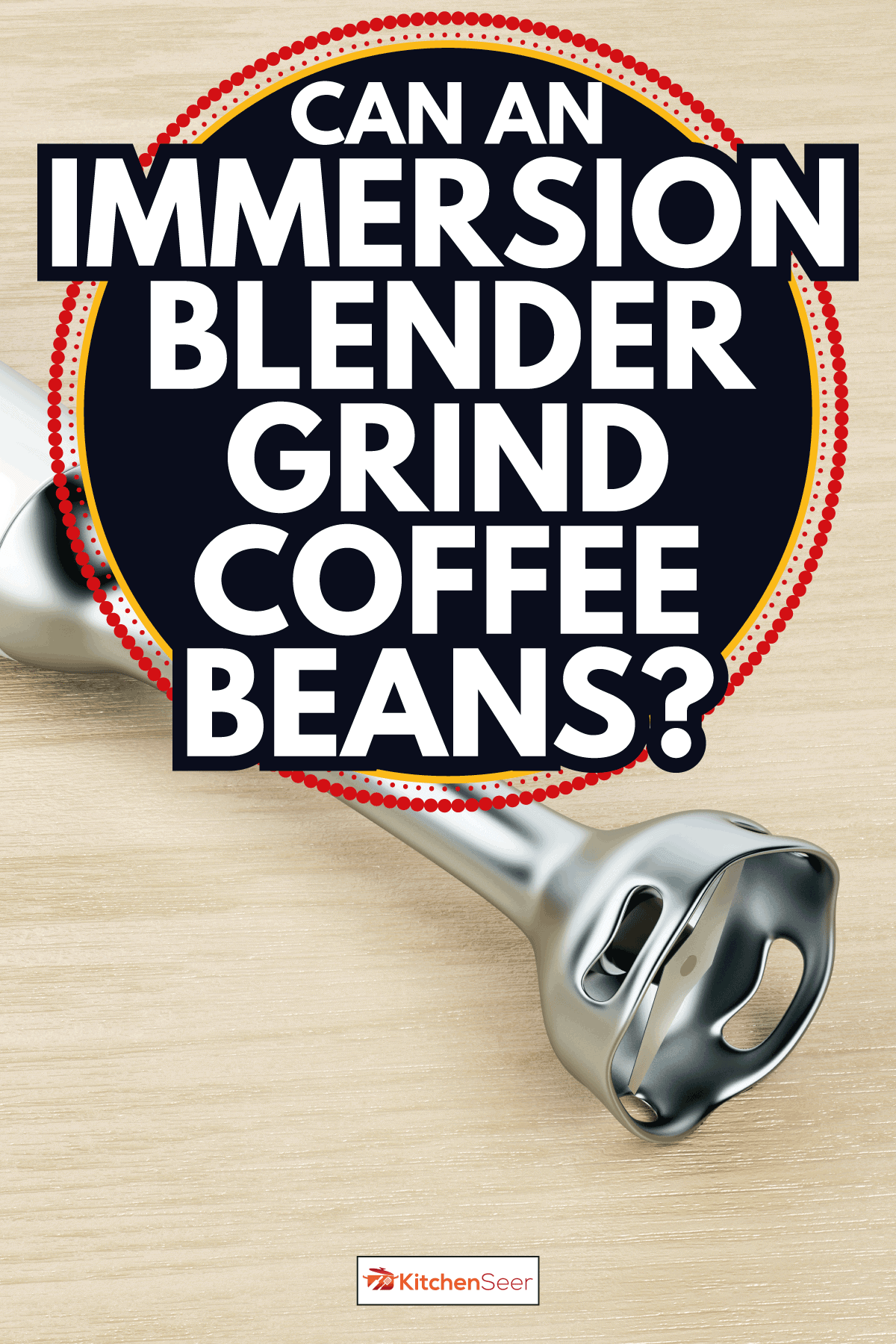
Can You Use A Hand Blender To Grind Coffee Beans?
An immersion blender is also known as a hand blender, wander blender, and stick blender. As we mentioned above, it is possible to grind coffee beans with this tool! However, the results you get will vary. Not all hand blenders are the same. Some have more power which can provide finer grinds.
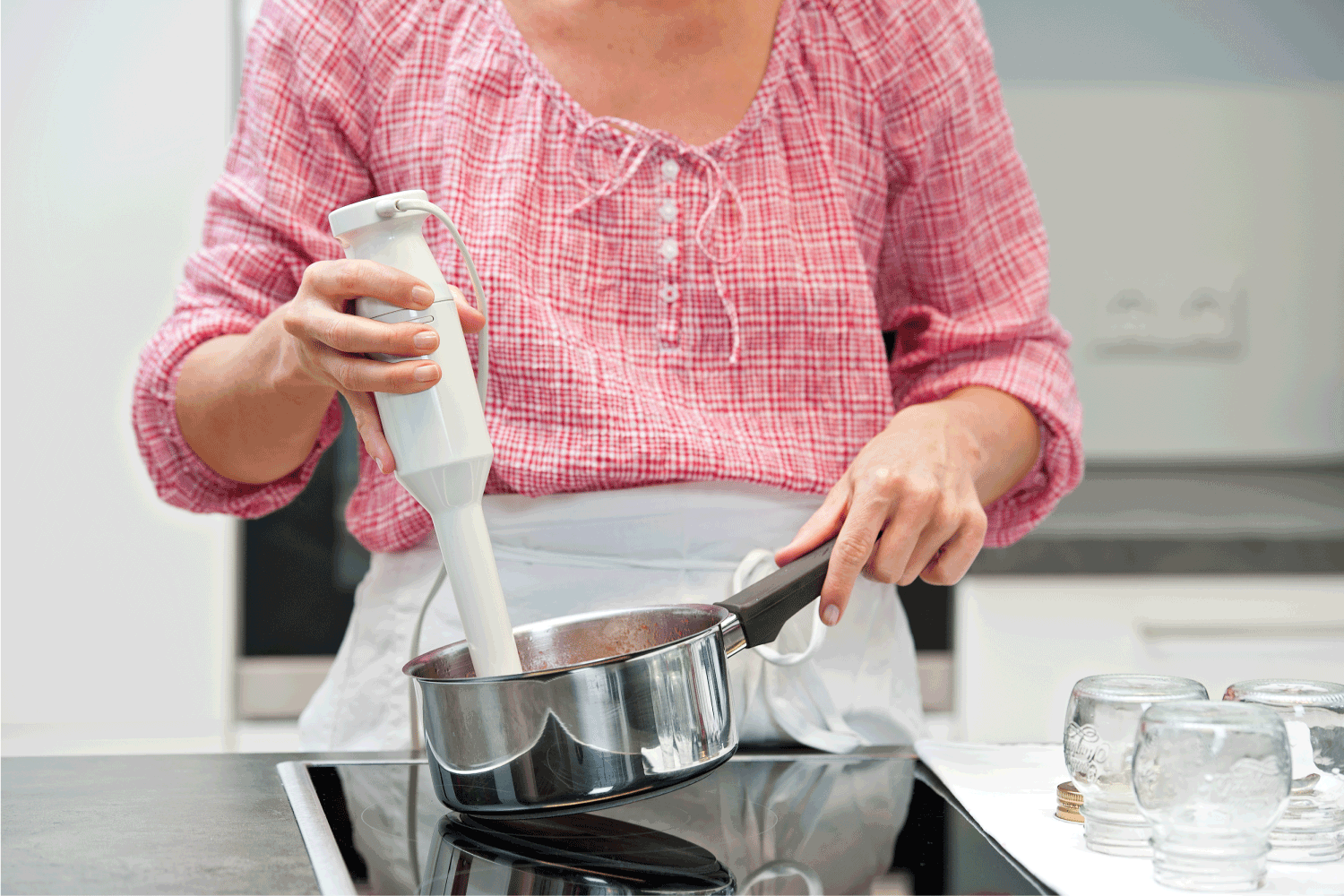
Before we get into that, let's go over the steps to grind coffee beans with your immersion blender!
How Do You Grind Coffee Beans With An Immersion Blender?
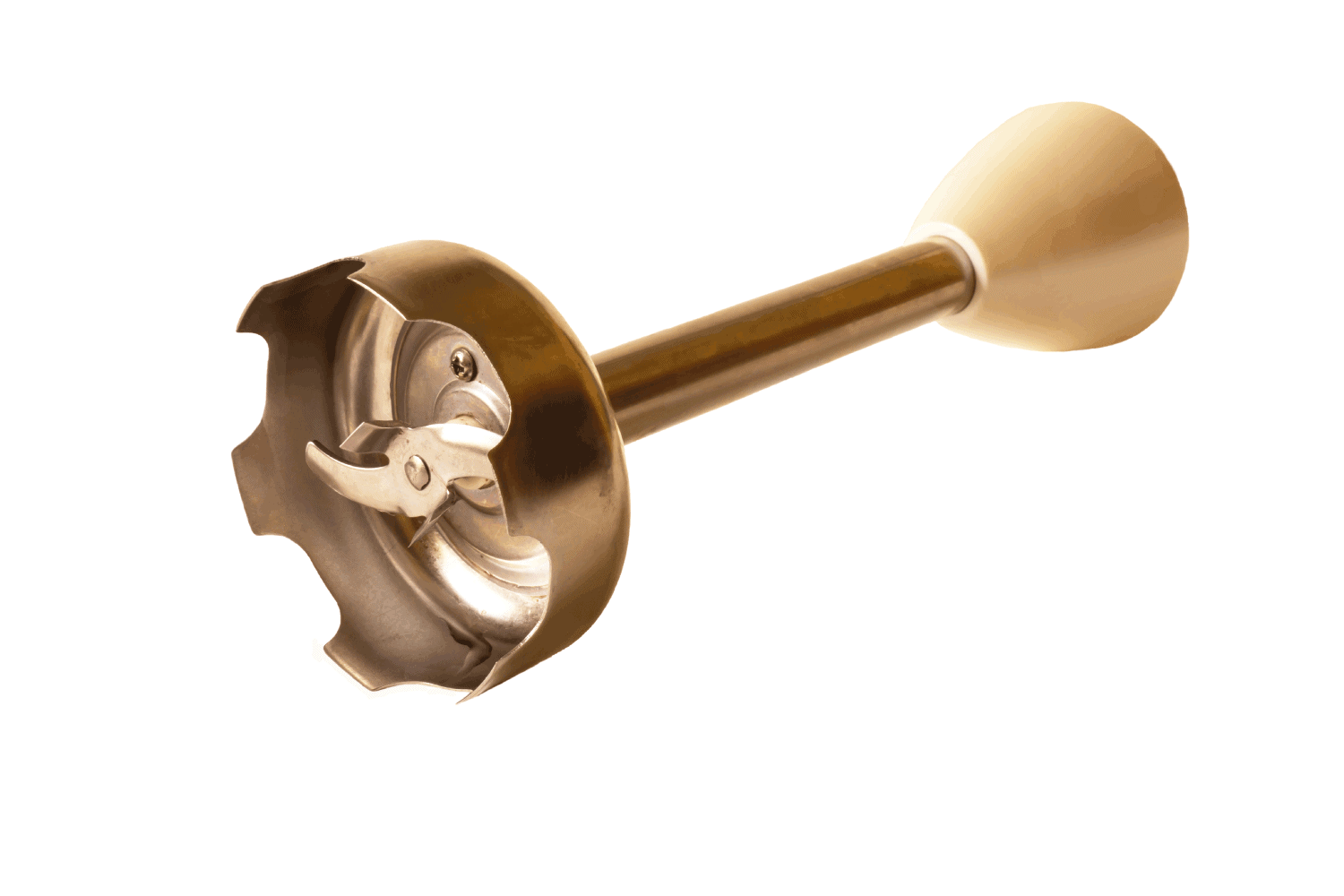
The first step to grinding the coffee beans is to attach the chopper attachment. Depending on the model of your hand blender, there will be some mechanism to lock it into place. Snap it into place. Then, we will move on to the next step.
The Chopping Bowl

Before we proceed, the chopping bowl you choose needs to be a narrow container. It does not have to be the attachment that comes with your blender. You can use a cup, bowl, etc. If you wonder why the container needs to be narrow, it prevents the coffee beans from spilling over during the process.
Likewise, if you do not have an immersion wand container, you will need to provide cover for whatever you use. This cover can be as simple as your hand. Once you have chosen your chopping area, it is time to add the beans.
Coffee Beans
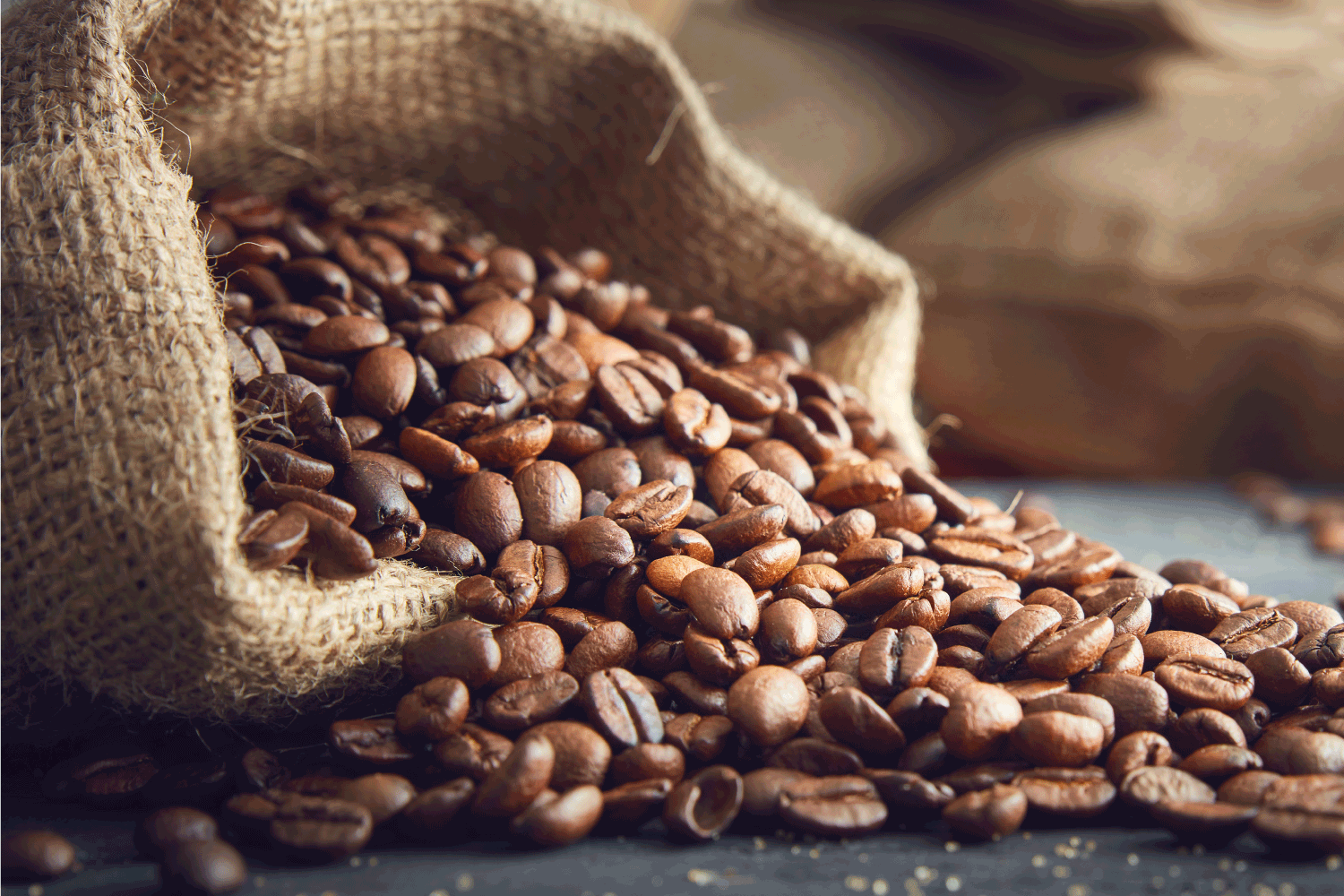
Add coffee beans into the chopping area. For an average cup of coffee, you need two tablespoons of ground coffee. In essence, this would mean you need two tablespoons of coffee beans to grind. If you are wondering whether they measure the same in volume, some users suggest they do!
Regardless, you can adjust depending upon how strong you want your coffee to be. Once you decide how much you want, close the container you are grinding the beans in.
Grinding
At this point, you can turn on your hand blender. If you are using a container without a cover, use your hand or surround the top to prevent spillage. Shake the container a couple of times and continue grinding.
The results you can get depends on the power of your hand blender. As mentioned before, not all immersion blenders are the same. Many typically use them for soft foods. Therefore, your immersion blender will hover around 150-250 watts of power. It may or may not be enough to grind beans into a fine texture.
If you want to learn about the importance of wattage in blenders, you can check out our post here.
Bringing it back, depending on the strength of your immersion blender, you will need to grind for about 10 seconds to get coarse coffee beans. If you want a finer grind, it will take about 20 seconds or longer. In the end, it will take some experimentation to get the ground type you want.
Clean Up
Of course, nothing is worse for machines than leaving them uncleaned! Once you finish grinding, dump the content into your coffee maker. Depending on your immersion blender's user manual, take the necessary steps to rinse the blade and the bowl. Dry the bowl and components before storing them away.
Everything is easier said than done. Reading the steps is not the only way to learn how to proceed with the process. If you would like some visual guidance, here are two YouTube videos to help:
As you can see from the second video, the immersion blender produced a coarse grind. There may be some experimentation you can do to change the results. However, keep in mind that you might not be able to go for finer grinds if that is what you are after.
What Is The Best Way To Grind Coffee Beans?
Click here to see this grinder on Amazon.
Getting the perfect grind might be more difficult than expected. When you use alternative methods like immersion blenders, it is tough to get thorough consistency throughout the coffee bean. So, what is the best option to get great flavors every time?
If you want ultimate control over your grind, a burr grinder is your best bet. Burr grinders apply even pressure and rotation to crush the coffee beans into a perfect consistency. But, you may ask, why does an even grind matter?
Why Grind Matters
There are two things to consider when you grind coffee beans. Over-extraction and under-extractions will lead to different flavors of coffee. So, what does that mean for you, the consumer?
When you grind coffee beans, the purpose is to extract the goods inside the bean. By goods, we mean flavor and oils. The more you grind a bean, the more surface area you allow for water to draw out the flavor. With an uneven grind, it can lead to multiple off-flavors in your cup of joe!
If you drink under-extracted coffee, you will notice excess acidity. What's more, you might not be able to taste the real flavor of the coffee bean! We will cover over-extraction in another section.
Do Blade Grinders Grind Coffee Beans Well?
Click here to see this blade grinder on Amazon.
Regardless of your situation, you do not have to have a burr grinder. Blade grinders do a well-enough job. It is up to you to choose between a blade grinder and a burr one. Burr grinders tend to cost more. Meanwhile, blade grinders are typically inexpensive.
If you are a coffee enthusiast, a burr grinder will most likely suit your grind needs. However, if you are a beginner, blade grinders will do fine until you are ready to take the next step! You can not go wrong either way.
Can You Over-grind Coffee Beans?
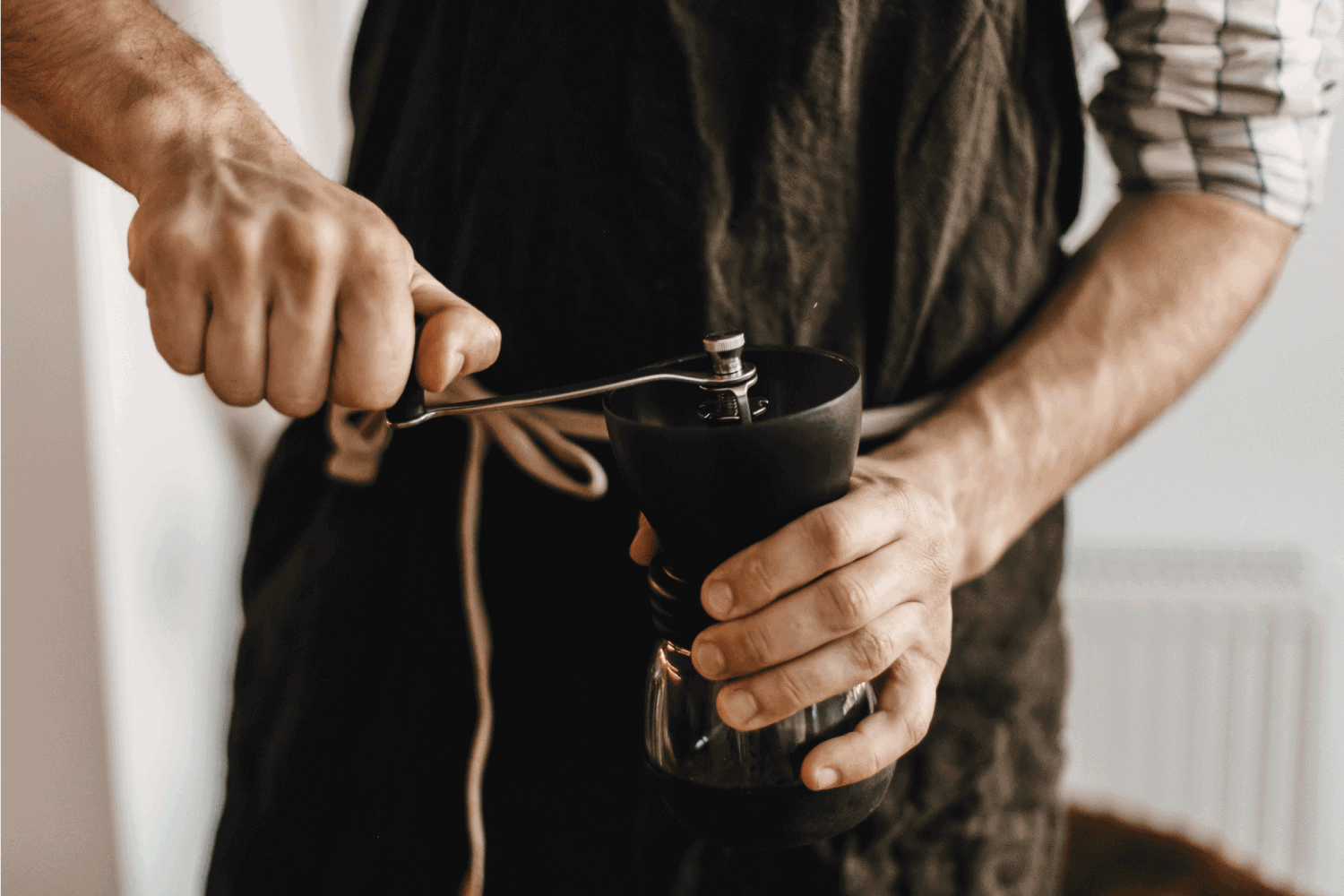
Of course, there comes a time where we have to question if we can over-grind coffee beans. The essential purpose of grinding coffee beans is to extract what is inside. Grinding the beans helps the water draw out the flavor and oils we all know and love. Therefore, if we break down the beans continuously, we allow the water more surface area to take the goods inside the bean.
While that might sound good, too much extraction is not. There are rules to the types of grind you would most likely want. To give you an overview, here are the grind types you might consider for flavor:
- Coarse grind - French Press
- Fine grind - Drip Coffee
- Finer grinds - Espresso Coffee
If you grind too much, some suggest you will end up with an unnecessarily bitter coffee.
Nevertheless, it's tough to pinpoint grind size online. So, here's a list of the grinds descriptions:
- Coarse grinds result in chunky pieces. It is similar to kosher salt.
- Medium ones will have flakes present. You can describe it as coarse sand.
- A fine texture will resemble that of table salt.
- With an extra-fine grind, you will no longer be able to see coffee grains. It is similar or finer than granular sugar.
- Turkish grind will be comparable to a flour texture.
Final Takeaway
Getting a great cup of joe can make or break your day. After all, it is the fuel you use to go about your day. Therefore, you must familiarize yourself with ways to grind beans in situations where you do not have access to a grinder. We hope you found the information above insightful!
Before you go, do you have other concerns about coffee? Do you wonder if you have to put a filter in a coffee maker? We have the answer! For more information, check out our post here. Until next time!



